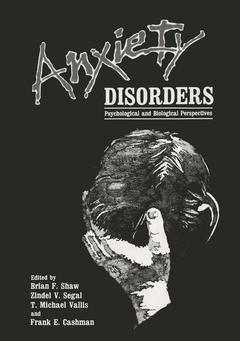Anxiety is one of those entltles which everyone "knows", but which ultimately resists simple objective description. The essence of the phenomenon is its subjectivity. True it has its well documented associated physiological events: the increased pulse rate and blood pressure, sweating, and so on, but each of these phenomena may also be part of physical exertion, fear, or even pleasurable excitement. They cannot fully define the sense of threat, danger, collapse, malignancy in greater or smaller amount, in greater or lesser locali sation, with more or less objective evidence for its validity that characterises the particular psychological pain we all recognize as anxiety. It is precisely the essential subjectivity of anxiety and its association with an enormous range of experience that makes it difficult to assign to it well-defined diagnostic labels of the kinds so carefully described by Dr. Spitzer in his chapter on classification. His chapter ranges from the extreme dread of "Panic Disorders", to the diffuse terror of the environment which used to be labelled "Agoraphobia" (and is still so called in the day to day pragmatic usage of many clinics) and is not assimilated to the class of phobias with the label "Social Phobias". He also addresses the "Simple Phobias" which are perhaps the most readily labelled of the many varieties of anxiety.




